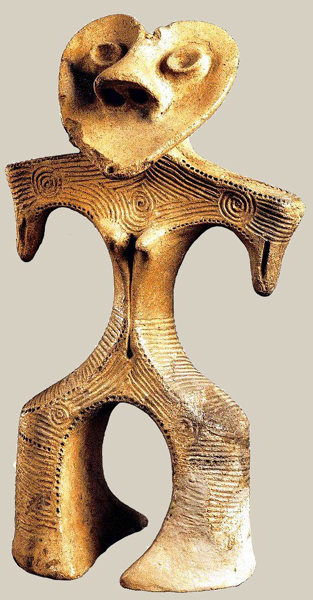
photo source: ryusoku.com
Dogu with heart-shaped face
2000-1000 BC, from Gohara
Tokyo National Museum
This appealing female dogu has a flat, shield-like, heart-shaped face with an outsized nose and absent mouth. Most of the figure's body, except for its torso, is scored with closely-spaced parallel lines that are interruped by small, concentric circles at the shoulders, collarbone, and hips. These lines are usually interpreted as tattoos. A narrow, Y-shaped, vertical fold leads from small breasts down to the figure's navel. The curve of her narrow torso extends in a continuous, ear-shaped, line underneath the arms; the figure seems designed to be grasped there. The inner curve of her legs defines a large, through-and-through, ovoid space with various possible interpretations.
The contrasting yet harmonious textures and curves of this figure, together with its marvelous definition of positive and negative space, combine to make this an outstanding work of art in modern terms. However much we appreciate it today, though, we have little knowledge of what it meant to the Jomon themselves. For example, there is no reason to think that the "heart" shape, that we see in the face, meant a "heart" shape to the Jomon. For all we know it could have meant a leaf, or just the curve of the eyebrows, or something else entirely, to its makers.


